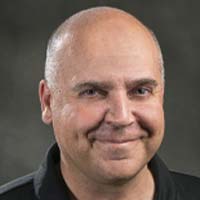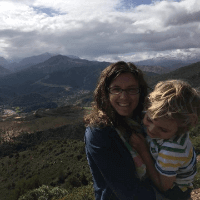One of the key advocates in that initial effort was Dr. H. Jack Geiger, who, as a young doctor studying in South Africa, observed how a local, community-based health model improved health outcomes for those most in need. His work, along with the work of many others, led to the first two community health centers being funded in the US in 1965 and 1967.
This country is facing a severe physician shortage. The Association of American Medical Colleges (AAMC) estimates that by 2033, there may be up to 139,000 unfilled physician roles. Physician assistants can fill many of these roles and provide the same quality of care, often at a lower cost. A 2019 study of Veteran’s Affairs patients found that “PAs can effectively manage primary care for complex patients with diabetes without increasing total care costs” and that “care quality in the VA did not differ by primary care provider type.”
Physician assistants are also critical for access to care, particularly in rural and underserved communities where it may be difficult to recruit, hire, and retain a physician. To raise the visibility of the critical work of physicians assistants, the American Academy of Physician Assistants (AAPA) has designated October 6-12, 2021 as Physician Assistant Week.
In 1987, the AAPA designated October 6 as Physician Assitant Day, and then in 2004, it expanded the celebration to an entire week. The expansion allowed for more activities and a longer time to acknowledge the tireless day-to-day work of physician assistants.
Continue reading to learn more about this important profession directly from an expert in the field.
Meet the Expert: Jared Spackman, MPAS, PA-C

Jared Spackman, MPAS, PA-C
Jared Spackman is the physician assistant program director at the University of Utah—the same institution where he earned his master’s in physician assistant studies. He has over 17 years of experience providing high-quality patient care in several disciplines, including orthopedics, pediatrics, urgent care, and internal medicine.
He joined the University of Utah faculty in 2018. In addition to his program director duties, he instructs in pediatrics, infectious diseases, and missions in practice. He also directs the pediatrics program.
Spackman is well-respected in the community at large, having held positions such as the president of the Utah Academy of Physician Assistants and Legislative chair for the Utah Academy. He is currently serving as the chair of the Utah Physician Assistant Licensing board.
What Makes Physician Assistants Unique
One of the biggest benefits of physician assistants is that they can provide quality patient care with much less schooling than a physician. “You are looking at three years from matriculation to graduation; with medical school, you’re looking at four years plus a three-year or longer residency. PA’s are highly trained, and the quality of care has been shown to be the equivalent to care provided by other providers like nurse practitioners and physicians,” says Spackman.
In most states, physician assistants must work in collaboration with a physician for the duration of their practice or for a set period of time. This teamwork can often result in more comprehensive patient care. “From a medical-legal standpoint, we’ve actually been proven to be safer. Part of that reason is that we are the original team players. What we often say is you’re going to get two opinions for the price of one. We’re pretty quick to collaborate and work with our physician colleagues or other colleagues within the health field that can provide good care for patients,” says Spackman.
Another unique aspect of physician assistants is their ability to adapt or change specialties with relative ease: “I call us the stem cells of medicine. We complete a general education but then, through those collaboration agreements, we are able to work in different sub-specialties and change subspecialties. Physicians can’t do that unless they do another residency. It allows PAs to flow into healthcare gaps and also to change trajectory as the workforce needs change,” says Spackman.
Physician Assistants and Covid-19
Thanks to the flexible nature of physician assistants, they have been instrumental in the fight against Covid-19. Spackman says that at the start of the pandemic, the State of Utah made critical changes to the way physician assistants could practice:
Delegations of services agreement and supervisory agreements have traditionally constrained PA is in terms of what subspecialties they work in and who they work with. Since this was a disaster scenario, those rules were suspended, and that allowed for a rapid redeployment of physician assistants in different systems. For instance, some of my clinical work is in urgent care, and there were a bunch of my urgent care physician assistant colleagues who were redeployed to the ICU at the University of Utah. This allowed for an increased surge capacity and allowed for the current ICU staff to concentrate on the sickest patients.
In fact, according to the AAPA, all but three states made some kind of change to their physician assistant practice acts during the pandemic. These changes could be as small as a suspension or waiver of certain practice requirements, such as allowed ratios or the ability to practice telemedicine, all the way up to a complete suspension or waiver of the requirements to be supervised by a physician.
However, as the state of emergency declarations expire and are not renewed, many of the practice act requirements are being reinstated.
The Move to Independent Practice for PAs
While Covid-19 may have accelerated the ability for physician assistants to practice independently, this conversation has been going on for decades. It’s a complicated debate, and there are compelling arguments on both sides.
In March 2021, Utah updated the scope of practice for physician assistants: “Legislation changed to where PAs who have 10,000 hours of practice can practice without a collaboration or supervision agreement. It’s sort of a graduated autonomy, if you will. I think that’s appropriate and likely the direction things are headed on a national scale,” says Spackman.
The AAPA strongly advocates for this independent level of practice which they call Optimal Team Practice. According to their website, “Optimal Team Practice occurs when PAs, physicians, and other healthcare professionals work together to provide quality care without burdensome administrative constraints.”
The AAPA considers the legal requirement of a relationship between a physician assistant and another healthcare provider to be an unnecessary hardship for otherwise competent and educated professionals. They argue that removing the requirement will allow healthcare facilities to be more flexible in determining teams and allow providers to practice in rural communities where there may not be physician supervision.
“As a PA educator, I have some concerns,” says Spackman. “Right now, we train students to graduate into an environment where there’s collaboration or supervision. Our education accreditation requirements include clinical practice experiences with board-certified clinicians physicians. We don’t want to see enmity between board-certified physicians and PAs who are training. For instance, a board-certified emergency medicine physician may say, ‘I’m not super keen to train a PA that may someday be able to practice independently in an ER.’ Our accreditation standards require us to place students with those clinicians so it can affect us on the training end. If we depend on physicians to help us train our workforce, then we have to continue to have a partnership with them—and anything that would jeopardize that partnership is worrisome.”
Generally speaking, physician assistants are well-accepted by physicians as long as they continue to work under supervision. The American Medical Association (AMA) actively lobbies for laws that limit the scope of practice of non-physicians. Since 2019, the AMA claims to have secured over 100 legislative wins to stop “inappropriate scope expansions of nonphysicians.” For example, they helped defeat a bill in South Dakota that “would have allowed physician assistants to practice without any physician involvement, putting patients at risk and weakening the definition of care team collaboration.”
Should There Be Additional Training For Physician Assistants?
Physician assistants are trained to be generalists and typically specialize through on-the-job training. There has been a move in the industry, primarily from employers, to formalize this training with postgraduate fellowships or residencies: “They are not residences in the sense of a traditional physician residency that lasts three years, but is rather a six to 12 month extended training period in a subspecialty in order to be able to work in that area. While that’s not a universal requirement, it is becoming more common,” says Spackman.
”For instance, say you want to work for [a local medical center] and work on their trauma team, where almost all of their trauma team is physician assistants. They have a postgraduate trauma fellowship that trains PAs to work in that sub-specialty. I think that can certainly lead to a higher level of care, but it can also lead to potentially a bottleneck or a barrier for being able to work in that area. In the past, they might take a graduate and train them in a more informal way.”
Some states are even requiring additional education for certain specialties. “It’s not mandated by licensing boards at this point, although we just had a change in legislation here in Utah that if a PA wants to work in mental health and perform psychotherapy, they need to have either earn an NCCPA certificate of added qualifications in psychiatry, or they need to have completed a residency in psychiatry,” he says.
Spackman feels that the additional education, while helpful, erodes away some of the things that make physician assistant education unique. “Those programs feel like barriers for me in terms of the kinds of students we want to recruit and turn into graduates because we want to recruit folks from underserved backgrounds. We want to recruit folks who might be first-generation college graduates. We want to recruit folks who may not have the financial resources to necessarily go to medical school. Part of the beauty of our education model is that folks can graduate in a relatively short period of time and, in some cases, return to communities of need where they came from in the rural community or the inner city,” he says.
Resources for Physician Assistant Week
Ready to celebrate physician assistant week? Here are some resources that can help you find ways to get involved and recognize these fantastic healthcare providers.
- Physician Assistant Week: Physician Assistant week is always celebrated from October 6-12, 2021. The official website has a wealth of resources, including social media assets, a virtual career fair, and connections to events.
- American Academy of Physician Assistants (AAPA): The American Academy of Physician Assistants is the national professional association for PAs and sponsors Physician Assistant week. It was established in 1968 and now represents the more than 129,000 physician assistants across the country.
- National Commission on Certification of Physician Assistants (NCCPA): Physician assistants in all 50 states must pass the Physician Assistant National Certifying Examination (PANCE) administered by the NCCPA.

Kimmy Gustafson
WriterAt HealthcareDegree.com, Kimmy Gustafson has delivered in-depth and insightful articles since 2019, aiding prospective students to navigate the complexities of choosing the right healthcare degree. Her recent work includes topics such as the ethics of gene editing and physician assistant’s fight for autonomy.
Kimmy has been a freelance writer for more than a decade, writing hundreds of articles on a wide variety of topics such as startups, nonprofits, healthcare, kiteboarding, the outdoors, and higher education. She is passionate about seeing the world and has traveled to over 27 countries. She holds a bachelor’s degree in journalism from the University of Oregon. When not working, she can be found outdoors, parenting, kiteboarding, or cooking.